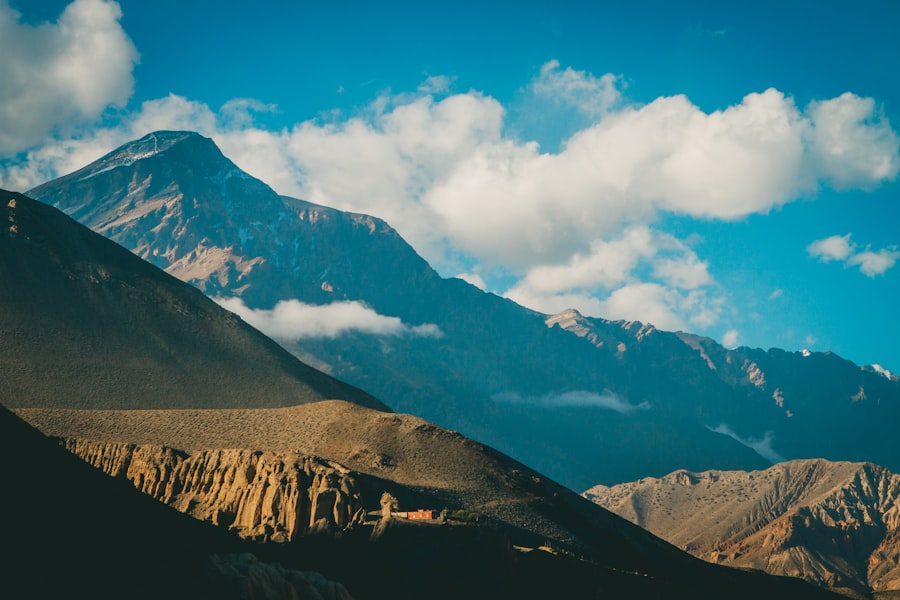Bikepacking is an exhilarating blend of cycling and camping, allowing you to explore the great outdoors while carrying everything you need on your bike. Unlike traditional touring, which often involves a heavier load and more rigid routes, bikepacking emphasizes lightweight gear and the freedom to venture off the beaten path. You can traverse rugged trails, navigate through remote landscapes, and immerse yourself in nature, all while enjoying the thrill of pedaling your way to new destinations.
This unique form of adventure cycling has gained popularity among outdoor enthusiasts who seek both physical challenge and the serenity of nature. At its core, bikepacking is about exploration and self-sufficiency. You can choose to ride solo or with friends, but the essence remains the same: you are responsible for your journey.
The routes can vary from well-maintained paths to challenging backcountry trails, and the experience is often as much about the journey as it is about the destination. Whether you’re traversing mountains, forests, or coastal roads, bikepacking invites you to connect with your surroundings in a way that few other activities can.
Key Takeaways
- Bikepacking is a combination of mountain biking and minimalist camping, allowing riders to explore remote areas and cover long distances.
- Essential gear for long-distance bikepacking includes a lightweight tent, sleeping bag, cooking equipment, and repair tools for the bike.
- Top long-distance bikepacking routes around the world include the Great Divide Mountain Bike Route in the US, the Silk Road Mountain Race in Kyrgyzstan, and the Carretera Austral in Chile.
- Tips for planning and preparing for a bikepacking adventure include researching the route, training physically, and packing light and efficiently.
- Safety considerations for long-distance bikepacking include carrying a first aid kit, knowing basic bike repair skills, and being prepared for changing weather conditions.
Essential Gear for Long-Distance Bikepacking
When preparing for a long-distance bikepacking trip, selecting the right gear is crucial for both comfort and safety. Your bike should be equipped for the journey, which means investing in a reliable touring or gravel bike that can handle various terrains. Consider adding wider tires for better traction and stability on rough paths.
Additionally, a sturdy frame bag, seat pack, and handlebar bag will help you distribute weight evenly while keeping essential items easily accessible. Beyond the bike itself, your camping gear plays a significant role in your overall experience. A lightweight tent or bivy sack is essential for shelter, while a compact sleeping bag and sleeping pad will ensure you get a good night’s rest after a long day of riding.
Cooking gear should also be lightweight; a portable stove and minimal cookware can make meal preparation simple and enjoyable. Don’t forget to pack clothing suitable for varying weather conditions, as well as tools for basic bike repairs. The right gear not only enhances your comfort but also ensures you’re prepared for any challenges that may arise on the road.
Top Long-Distance Bikepacking Routes Around the World

There are countless breathtaking routes around the globe that cater to bikepackers seeking adventure. One of the most iconic is the Great Divide Mountain Bike Route in North America. Stretching over 2,700 miles from Canada to Mexico, this route takes you through stunning mountain landscapes, remote wilderness areas, and charming small towns.
The diverse terrain offers everything from challenging climbs to smooth descents, making it a favorite among seasoned bikepackers. Another remarkable route is the EuroVelo 6, which spans from the Atlantic Ocean to the Black Sea. This extensive network of cycling paths allows you to experience various cultures and landscapes across Europe.
You’ll ride alongside rivers, through vineyards, and past historic sites, all while enjoying the camaraderie of fellow cyclists along the way. Each segment of this route presents its own unique challenges and rewards, making it an excellent choice for those looking to immerse themselves in different environments.
Tips for Planning and Preparing for a Bikepacking Adventure
| Aspect | Details |
|---|---|
| Route Planning | Research and plan your route, considering distance, terrain, and available resources. |
| Gear Checklist | Make a checklist of essential gear such as tent, sleeping bag, cooking equipment, and repair tools. |
| Food and Water | Plan your meals and ensure access to clean water sources along the route. |
| Physical Training | Prepare physically for the demands of bikepacking by training and building endurance. |
| Weather Considerations | Check the weather forecast and pack appropriate clothing and gear for the conditions. |
Planning a successful bikepacking trip requires careful consideration of several factors. Start by choosing your route based on your skill level and interests. Research trail conditions, weather forecasts, and available campsites along the way.
It’s essential to have a clear understanding of the terrain you’ll encounter so you can prepare accordingly. Additionally, consider how many miles you want to cover each day; setting realistic goals will help you enjoy the journey without feeling rushed. Preparation also involves physical training.
Building your endurance through regular cycling will make a significant difference in your overall experience. Incorporate longer rides into your routine leading up to your trip, gradually increasing distance and difficulty. This will not only enhance your physical fitness but also help you become familiar with riding with a loaded bike.
Lastly, don’t forget to plan for nutrition and hydration; packing enough food and water is vital for maintaining energy levels throughout your adventure.
Safety Considerations for Long-Distance Bikepacking
Safety should always be a top priority when embarking on a long-distance bikepacking journey. First and foremost, familiarize yourself with basic bike maintenance skills so you can address any mechanical issues that may arise on the road. Carry essential tools and spare parts like tubes and tire levers to ensure you’re prepared for common problems.
Additionally, it’s crucial to stay aware of your surroundings while riding. This includes being mindful of traffic if you’re on roads shared with vehicles and keeping an eye out for wildlife when traversing remote areas. Carrying a first aid kit is also advisable; accidents can happen even to the most cautious riders.
Lastly, let someone know your planned route and expected return time before you set off; this simple step can provide peace of mind for both you and your loved ones.
The Physical and Mental Challenges of Long-Distance Bikepacking

Physical Challenges of Long-Distance Bikepacking
Long-distance bikepacking presents both physical and mental challenges that can test your limits. Physically, you’ll be pushing your body through varying terrains and weather conditions, which can lead to fatigue and soreness. It’s essential to listen to your body and take breaks when needed; overexertion can lead to injuries that may derail your adventure.
Mental Resilience and Adaptability
Mentally, bikepacking requires resilience and adaptability. You may encounter unexpected obstacles such as inclement weather or difficult trail conditions that force you to alter your plans. Embracing these challenges as part of the journey can enhance your experience; each hurdle overcome adds to your sense of accomplishment.
The Therapeutic Benefits of Bikepacking
Moreover, spending extended periods in nature can provide clarity and perspective, allowing you to disconnect from daily stressors and reconnect with yourself.
Environmental Impact and Leave No Trace Principles for Bikepacking
As a bikepacker, it’s essential to be mindful of your environmental impact while exploring nature. Adhering to Leave No Trace principles is crucial in preserving the beauty of the landscapes you traverse. This means planning ahead by researching campsites that minimize disruption to wildlife habitats and ensuring that you pack out all waste, including food scraps.
Additionally, stick to established trails whenever possible to prevent soil erosion and protect fragile ecosystems. Respect wildlife by observing from a distance rather than approaching or feeding animals. By practicing these principles, you contribute to the sustainability of outdoor spaces for future generations of adventurers.
Personal Stories and Experiences from Long-Distance Bikepacking Adventures
Every bikepacking adventure comes with its own unique stories that shape your experience in profound ways. One rider might recount a moment spent under a starlit sky after a long day of pedaling through remote wilderness; the tranquility of nature can create lasting memories that resonate long after the trip ends. Another might share tales of camaraderie forged with fellow cyclists met along the way—strangers who become friends over shared meals or campfire stories.
These personal experiences highlight not only the physical journey but also the emotional connections formed during bikepacking adventures. Whether it’s overcoming challenges together or celebrating small victories at each campsite, these moments enrich your journey in ways that go beyond mere miles traveled. As you embark on your own bikepacking adventure, remember that it’s not just about reaching your destination; it’s about embracing every moment along the way.
